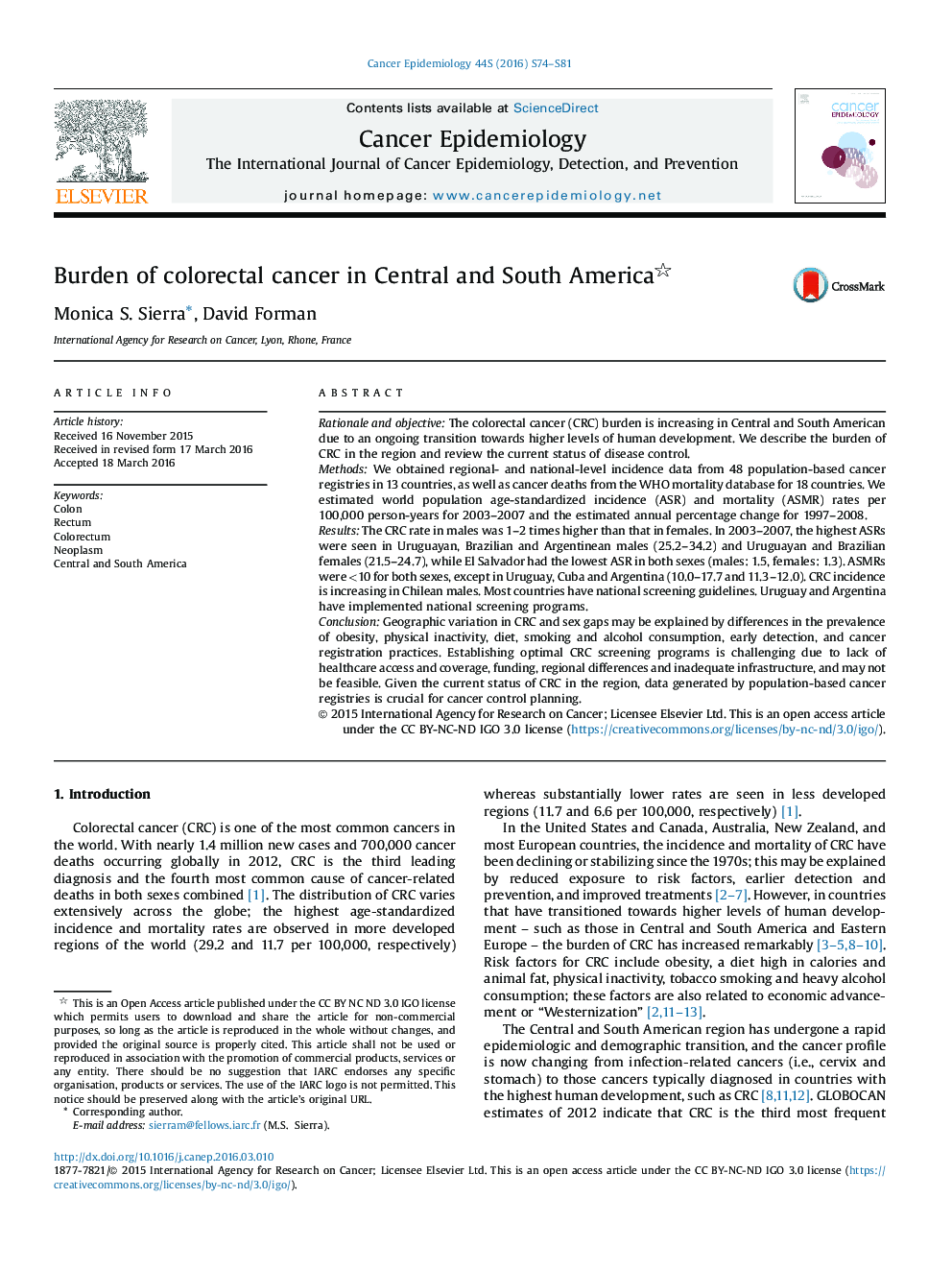| کد مقاله | کد نشریه | سال انتشار | مقاله انگلیسی | نسخه تمام متن |
|---|---|---|---|---|
| 5524898 | 1401457 | 2016 | 8 صفحه PDF | دانلود رایگان |
- Colorectal cancer is one the 5 the leading cancer diagnosis in Central and South America.
- Males have 1-2 times higher colorectal cancer rates than females.
- Uruguay, Brazil and Argentina are reaching similar incidence levels to higher income countries.
- Although most countries have screening guidelines, there is a limited capacity for screening.
- Uruguay and Argentina have national screening programs for colorectal cancer.
Rationale and objectiveThe colorectal cancer (CRC) burden is increasing in Central and South American due to an ongoing transition towards higher levels of human development. We describe the burden of CRC in the region and review the current status of disease control.MethodsWe obtained regional- and national-level incidence data from 48 population-based cancer registries in 13 countries, as well as cancer deaths from the WHO mortality database for 18 countries. We estimated world population age-standardized incidence (ASR) and mortality (ASMR) rates per 100,000 person-years for 2003-2007 and the estimated annual percentage change for 1997-2008.ResultsThe CRC rate in males was 1-2 times higher than that in females. In 2003-2007, the highest ASRs were seen in Uruguayan, Brazilian and Argentinean males (25.2-34.2) and Uruguayan and Brazilian females (21.5-24.7), while El Salvador had the lowest ASR in both sexes (males: 1.5, females: 1.3). ASMRs were <10 for both sexes, except in Uruguay, Cuba and Argentina (10.0-17.7 and 11.3-12.0). CRC incidence is increasing in Chilean males. Most countries have national screening guidelines. Uruguay and Argentina have implemented national screening programs.ConclusionGeographic variation in CRC and sex gaps may be explained by differences in the prevalence of obesity, physical inactivity, diet, smoking and alcohol consumption, early detection, and cancer registration practices. Establishing optimal CRC screening programs is challenging due to lack of healthcare access and coverage, funding, regional differences and inadequate infrastructure, and may not be feasible. Given the current status of CRC in the region, data generated by population-based cancer registries is crucial for cancer control planning.
Journal: Cancer Epidemiology - Volume 44, Supplement 1, September 2016, Pages S74-S81
